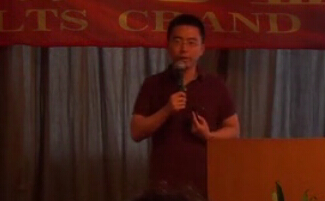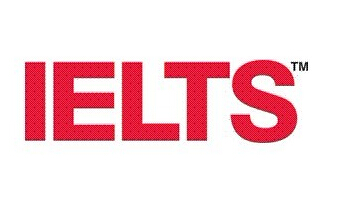【2012年11月24日】雅思阅读机经回忆及解析
2013-06-27 13:32 供稿单位: 北京新航道
出国英语考试有哪些 雅思6.5是什么水平 雅思阅读评分标准 托福阅读评分标准 雅思和托福的区别
下面新航道雅思频道为大家整理了雅思机经的回忆及解析,供考生们参考,以下是详细内容。
11月24日的雅思考试已经落下帷幕,“战后归来”的烤鸭们,想对自己的考试成绩和结果一探究竟;“蠢蠢欲动”备战近期考试的烤鸭们,想对的考题和考情辨别水深水浅
。
新航道“雅思梦之队”,时间为你点评11月24日考试,解读雅思听力、口语、阅读、写作考情。首先我们一起来看一下本次考试雅思阅读部分的内容:
(Reading)
Title:Russian Ballet
Type of Questions:T/F/N、Completion
【文章概要】
Passage 1
德国芭蕾舞发展史
Title:Aquaculture in New Zealand
Type of Questions:Completion、 Matching、Multiple Choice
【文章概要】
Passage 2
中文回顾:新西兰关于海洋新物种培育的影响
英文参考:Aquaculture is the general term given to the cultivation of any fresh or salt water plant or animal. It takes place in New Zealand in coastal
marine areas (mariculture) and in inland tanks or enclosures.
Aquaculture in New Zealand currently (2008) occupies 14,188 ha. Of that area, 7,713 ha is in established growing areas and is owned by the aquaculture
industry, 4,010 ha is used to enhance the wild scallop fishery and belongs to the Challenger Scallop Enhancement Company,[6] and 2,465 ha is an exposed site
six kilometres offshore from Napier where trials are being undertaken by a private company to test the site’s economic viability.
In 2005 the aquaculture industry provided direct employment for about 2,500 full time equivalents, mostly in the processing sector. A similar amount of
indirect employment resulted from flow-on effects. The aquaculture industry is important for some coastal areas around New Zealand where there is limited
employment. This applies particularly to some Māori communities with traditional links to coastal settlements.
Marine aquaculture, mariculture, occurs in the sea, generally in sheltered bays along the coast. In New Zealand, about 70 percent of marine aquaculture
occurs in the top of the South Island. In the North Island, the Firth of Thames is productive.
Marine farmers usually look for sheltered and unpolluted waters rich in nutrients. Often these areas are also desirable for other purposes. In the late
1990s, demand for coastal aquaculture space upsurged, increasing fivefold.[18] Aquaculture consents developed haphazardly, with regional councils unsure
about how marine farms might impact coastal environments. By 2001, some councils were inundated with marine farm applications, and were operating with
inadequate guidelines for sustainably managing the coast.[19] As the Ministry for the Environment put it: "Attempts to minimise local or cumulative
environmental effects resulted in bottlenecks, delays and high costs in processing applications for new marine farms, local moratoria, submitter fatigue and
poor environmental outcomes. Marine farmers, local communities, and the government wanted change."
In 2002, the government stopped issuing consents for more new marine farms while they reformed the legislation. The consents had operated under a system
overseen by both the Ministry of Fisheries and the regional councils. The reforms aimed to streamline these applications for both freshwater and marine
farms. Industry farmers objected to the moratorium, on the grounds that delaying expansion and diversification could not be in the interest of the industry.
Māori groups considered they were especially affected since they were the main applicants for coastal farms.
This took three years, and in early 2005, Parliament passed the Aquaculture Reform Act 2004, which introduced the new legislation. The act amends five
existing acts to cope with the new environmental demands, and creates two new acts, the Māori Commercial Aquaculture Claims Settlement Act 2004 and the
Aquaculture Reform (Repeals and Transitional Provisions) Act 2004.[20] The legislation and administration of aquaculture in New Zealand is complex for such a
small industry. A more comprehensive overview can be found here.
Aquaculture is administered in New Zealand through labyrinth bureaucracies, with consequent diluted responsibilities. No single ministerial portfolio or
government agency is responsible. As an example, in 2007 the government released a strategy on aquaculture. This strategy was endorsed by six government
ministers with the following portfolios: fisheries, environment, conservation, local government, Māori affairs, industry and regional development. Further,
there were five government departments directly involved in the preparation of the strategy. As another example, the access to marine and freshwater
aquaculture sites are under the control of 17 regional local government agencies with yet more oversight by various central government agencies.
Despite many further consultations and incentives, no new aquaculture space was created under the new legislation for another four years. This coincided
with a change in government at the end of 2008, which announced that the aquaculture reforms are to be overhauled.
Title:Talent
Type of Questions:Heading、Short-answer Questions; T/F/NG
【文章概要】
Passage 3
中文回顾:讲公司考核员工主要的依据:talents, 文章批判了传统的观点(才能是与生俱来的,是不变的,是需要公司去发现的)。文章先用一段肯定了有才能的人的存在,然
后分段讲才能是随时间变化的,是不能被精确度量的,是可以凭努力换来的。
以上就是新航道雅思频道为大家整理的雅思机经回忆及解析,更多资料尽在新航道雅思频道https://www.xhd.cn/ielts/。,新航道预祝大家雅思考试取得好成绩!
分享到:

- 新航道,英语成功之道。时间获取新航道英语学习资料和新鲜资讯,请在微信公众账号中搜索「新航道英语」或者「xhdenglish」,或用手机扫描左方二维码,即可获得新航道每日精华内容推送和英语学习经验分享,并参与新航道举办的各项活动。
责编:新航道小编
精彩专题
更多视频荟萃
更多
-
新航道姚骏鹏-雅思阅读高分攻略
时长:03-06

-
新航道陈侃侃-雅思口语要有范儿
时长:03-06

-
【3分钟学雅思】王大锤告诉你为啥药不能停
时长:01-12

-
【3分钟学雅思】全世界个感官餐厅
时长:01-12
热门文章
更多
-
8月31日雅思广州考机考初体验
选择机考模式的考生将通过机考模式参加听...








